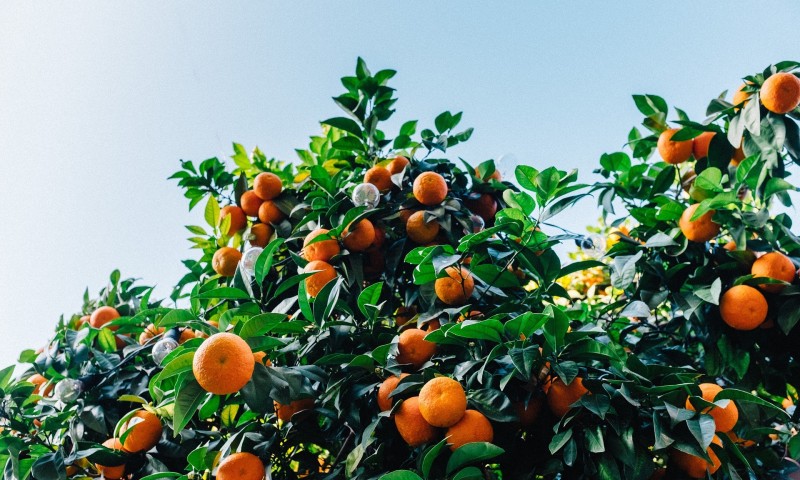Local produce and seasonal selection trends are still going strong as we close out 2016, and the quest for farm-to-table continues as we move into the New Year. One thing that is unlikely to go out of style anytime soon is the goal to increase the amount of fruits and vegetables you eat each day (at least you’re probably not going to find a dietitian that disagrees with that nutrition goal).
Selecting seasonal produce can be a fun way to increase the variety of foods you eat – and possibly help you expand your produce pallet. Let’s unpack some of Winter’s finest fruits and vegetables!
From Farm to Table: Healthy Winter Produce
Brussels Sprouts: Members of the Cruciferous Family
Brussels sprouts contain large amounts of antioxidants that can protect the body from damaging free radicals. They’ve also come a long way from our Aunts’ soggy steamed Brussels sprouts dish that we all remember from holidays long ago.
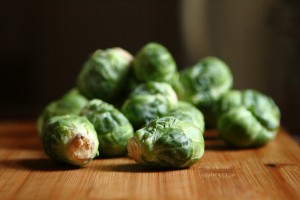 How to Store: Keep in a bag in your refrigerator for several weeks. Wash and dry just before using. The outer leaves will shrivel and turn brown – remove those prior to cooking.
How to Store: Keep in a bag in your refrigerator for several weeks. Wash and dry just before using. The outer leaves will shrivel and turn brown – remove those prior to cooking.
How to Use: Half or quarter (depending on size) and toss in a bowl with olive or coconut oil. Let your imagination run wild with flavor additions (herbs, spices, nuts, seeds and dried fruits) and roast in a 400 degree oven until the edges are slightly browned and crispy.
Recipe: One of my favorite side dishes is roasted Brussels sprouts tossed with coconut oil, walnuts, a small amount of honey, crushed red pepper flakes, and salt and pepper.
Parsnips
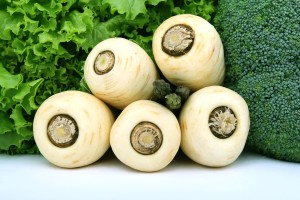 You know those “white carrots” you walk past in the grocery store without much thought? Those little gems have a name – they’re called parsnips! They are a root vegetable with a good amount of vitamin C, potassium and fiber. They taste slightly sweet and make a nice addition to soups or casseroles.
You know those “white carrots” you walk past in the grocery store without much thought? Those little gems have a name – they’re called parsnips! They are a root vegetable with a good amount of vitamin C, potassium and fiber. They taste slightly sweet and make a nice addition to soups or casseroles.
How to Store: Store them loosely in a bag in your refrigerator for up to three weeks. Wash, dry, cut off the ends and peel (if desired, you can also leave the peel on) just prior to using.
How to Use: Looking for a new version of sweet potato fries? Try using parsnips instead. Preheat oven to 450 degrees. Slice parsnips in shape of traditional potato french fries, in a bowl combining parsnips, olive oil (to coat), 1 tablespoon freshly chopped rosemary, 1 large minced garlic clove, kosher salt and pepper and 1/2 teaspoon ground cumin (if desired). Place on a baking sheet in a single layer and roast for 10 minutes. Turn and roast an additional 10-15 minutes.
Raddicchio
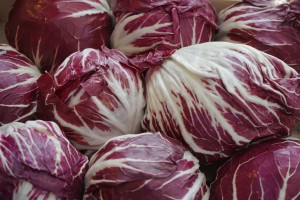 A leafy vegetable which comes from the chicory family, radicchio (pronounced ra-DIK-kio) is bitter
A leafy vegetable which comes from the chicory family, radicchio (pronounced ra-DIK-kio) is bitter
and slightly spicy. It adds a unique crunch and flavor
to salads, or you can saute it for a surprising side dish.
How to Store: Keep it wrapped in plastic in your refrigerator for up to two weeks. You can also wash, shred or finely chop, wrap in a paper towel, and place in a sealed plastic bag in the refrigerator for up to a week. It will be ready to use in salads, soups and sandwiches.
How to Use: Saute over medium heat in olive oil, garlic, salt and pepper until tender to add to a spicy side dish for your next dinner.
Clementines
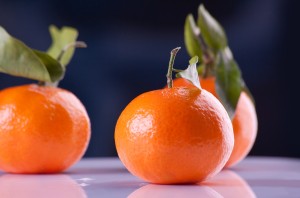 These portable, easy to peel citrus fruits are typically juicy and sweet with less acid than oranges.
These portable, easy to peel citrus fruits are typically juicy and sweet with less acid than oranges.
How to Store: Sort through the fruit and remove ones that are already overly ripe, or if it’s begun to rot. Place
in an open container (think a fruit basket). Do not place in a sealed container as this will encourage the spoiling process. Place out of direct sunlight and leave at room temperature for up to seven days. You can also store in the crisper drawer of the refrigerator for one to two weeks.
How to Use: Peel and separate segments – add to kale salad or in the final few minutes of sauteing chicken for a sweet addition to dinner.
Looking for More Ways to Celebrate the Season?
To get the most of this Winter season and these cool, crisp months, CLICK HERE and check out some fun, seasonal activities to get up and get active!

About the Author:
Cassie I. Story, RDN, is a dietitian who has been working with surgical and non-surgical weight-loss patients for the past 12 years. She is the Clinical Science Liaison for Bariatric Advantage where she helps educate other healthcare professionals around the unique nutrition needs of weight-loss surgery patients. She has her own food blog, www.WLSDailyPlate.com, which provides recipe inspiration for all members of the family – including those who have had metabolic/bariatric surgery. She enjoys traveling, hiking and spending time outdoors with her two daughters in Arizona.






